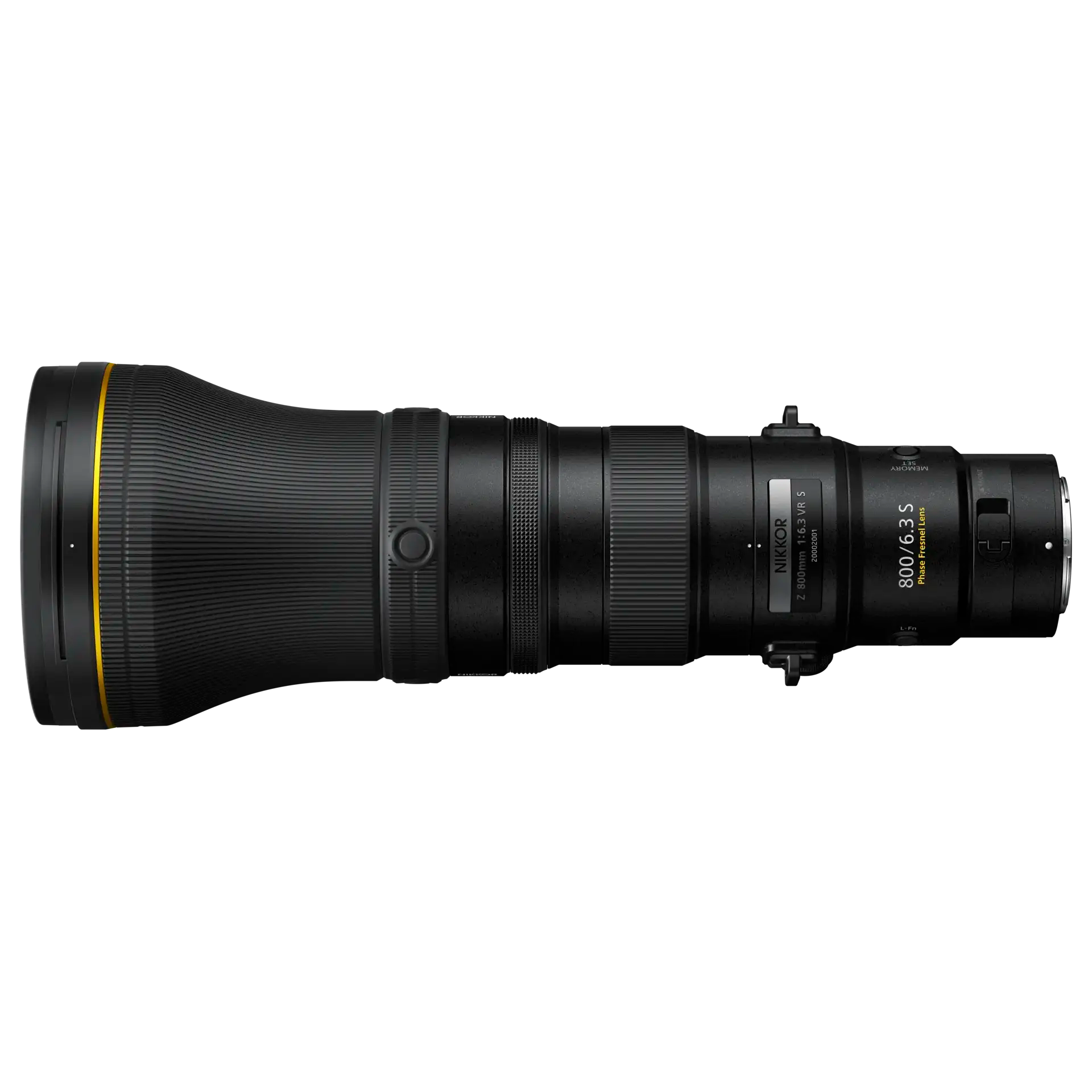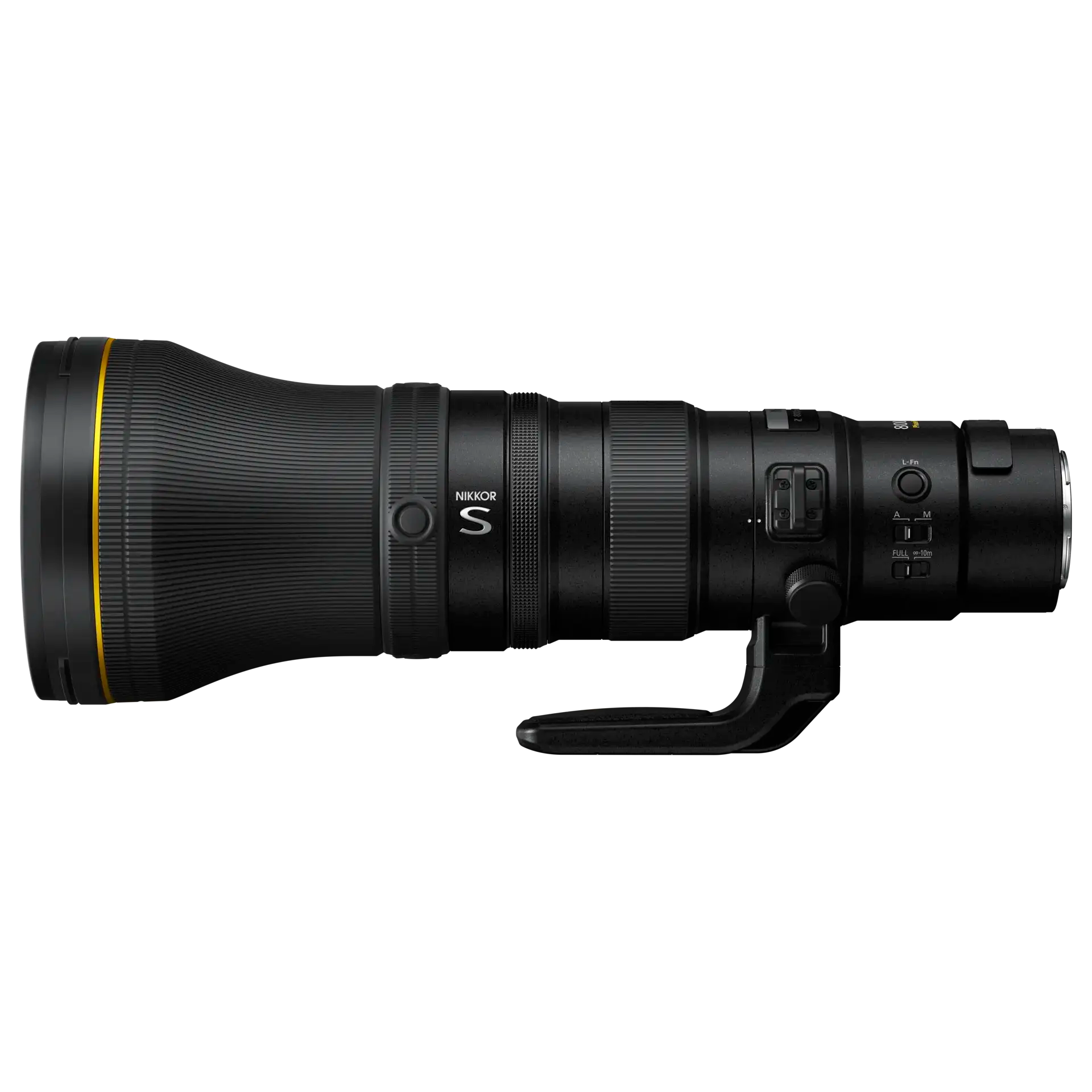Product Description
Nikon NIKKOR Z 800mm f/6.3 VR S Telephoto Lens: Unmatched Reach and Clarity
Nikon introduces the NIKKOR Z 800mm f/6.3 VR S, a super-telephoto lens that combines incredible reach with a surprisingly portable and lightweight design. Ideal for capturing distant subjects such as birds, wildlife, aircraft, and sports, this lens provides exceptional clarity and detail, even in challenging conditions. Its robust construction ensures durability while the advanced features deliver sharp, stable images across a range of applications.

Key Features at a Glance:
- Focal Length: 800mm
- Maximum Aperture: f/6.3
- Lens Construction: Phase Fresnel (PF) element, ED and SR glass
- Vibration Reduction (VR): In-lens optical VR, Synchro VR
- Autofocus System: Fast, quiet AF
- Teleconverter Compatibility: Extends to 1120mm or 1600mm
- Filter Slot: Integrated for easy filter insertion
- Weather Sealing: Advanced sealing and rubber gasket
- Control Features: Customisable L-Fn buttons, silent control ring

Exceptional Optical Performance
The NIKKOR Z 800mm f/6.3 VR S is engineered to deliver pin-sharp images with remarkable clarity. It features a Phase Fresnel (PF) lens element that helps to significantly reduce ghosting and flare, while ED (Extra-low Dispersion) and SR (Short-wavelength Refractive) glass elements control chromatic aberration across the entire image. This ensures superior resolution and colour fidelity, capturing even the most intricate details of distant subjects.

Advanced Vibration Reduction
The lens is equipped with in-lens optical Vibration Reduction (VR) to keep your shots steady. Synchro VR provides up to 5.5 stops of compensation when used with the Nikon Z9, making handheld shooting more manageable and effective. This powerful VR system is crucial for maintaining stability and sharpness, especially when photographing fast-moving subjects or shooting in low-light conditions.

Fast and Quiet Autofocus
With a fast and whisper-quiet autofocus (AF) system, the NIKKOR Z 800mm f/6.3 VR S ensures smooth and precise tracking of erratic or distant subjects. Whether you’re capturing the rapid movements of motorsports or the subtle details of wildlife, the lens delivers reliable performance with minimal noise.

Teleconverter Compatibility
Enhance your reach with Z TELECONVERTER TC-1.4x or Z TELECONVERTER TC-2.0x, extending the focal length to 1120mm or 1600mm, respectively. This flexibility allows for even greater magnification, making it easier to capture distant subjects with exceptional detail.

Customisable Control and User-Friendly Design
The lens features customisable L-Fn buttons and a silent control ring, allowing you to assign functions and adjust settings with ease. The memory-set button enables you to save and quickly recall focus distances, enhancing operational efficiency.

Robust Build and Weather Sealing
Built for durability, the NIKKOR Z 800mm f/6.3 VR S includes advanced weather sealing to protect against dust and moisture. A rubber gasket on the lens mount adds extra protection, ensuring reliable performance in harsh conditions.

Integrated Filter Slot and Easy Lens Hood
An integrated filter slot allows for convenient insertion of filters, providing additional control over lighting conditions. The HB-104 lens hood features a sliding release tab for easy removal with one hand, enhancing the user experience.

The NIKKOR Z 800mm f/6.3 VR S is a top choice for professional photographers seeking a super-telephoto lens that combines exceptional reach, advanced image stabilization, and outstanding clarity in a portable package. Whether you’re capturing wildlife in motion or distant landscapes, this lens delivers superior performance and versatility.
Payment & Security
Your payment information is processed securely. We do not store credit card details nor have access to your credit card information.





















